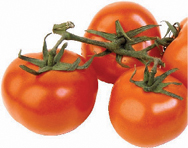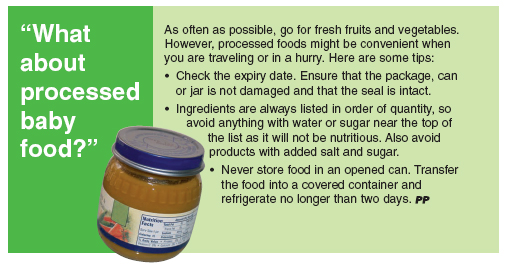Eating is as much a feast for the senses as it is for the tummy, fruits and vegetables can turn an otherwise normal meal into one bursting with different colours and textures. They are also full of vitamins and minerals that your baby needs, particularly as he approaches six months old and he now needs additional nutrients on top of what he is receiving from breast milk.
Incorporating plenty of fruits and vegetables into baby’s complementary foods will help him develop a taste for them from an early age.
As often as possible, go for fresh varieties. Start with small quantities and introduce one type at a time. Give baby three to five days to adjust to new tastes before introducing something else. This will also allow you to evaluate tolerance and identify any allergies if it happens.
Fruits and vegetables are part of a healthy diet that includes other food groups as well. To help baby cultivate wellbalanced eating habits and to develop a taste for a variety of foods, give equal emphasis to foods in every food group.
They all provide different vitamins and nutrients and in varying amounts. You cannot have one without the other!
Do’s & Don’ts
- Avoid buying bruised or wrinkled fruits and vegetables.
- Use fruits and vegetables as soon as possible after purchase.
- Eliminate traces of insecticides and other chemicals by washing fruits well, especially when the skin is to be eaten.
- Cut up fruits and vegetables only when you want to use them. Cutting them a long time in advance will cause vitamins to be lost.
- Do not leave prepared vegetables to soak in water as this leaches the vitamins from the vegetables.
- Cook fruits and vegetables in a steamer so that you can retain the vitamins normally lost in cooking.
- Cook soft-skinned fruits and vegetables in their skins. This retains their vitamins and provides additional fibre.









Comments